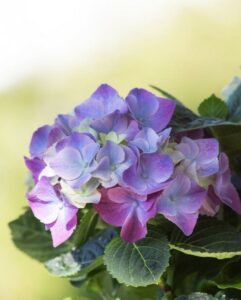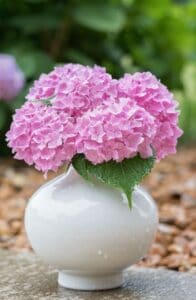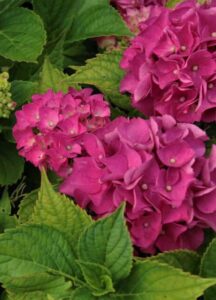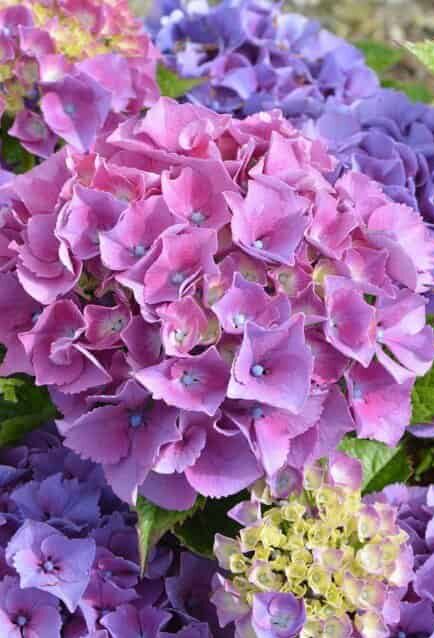Some links in the post are affiliate links and I get a commission from purchases made through some links found in the post.
Are you considering growing hydrangeas in direct sun, but you are unsure whether they thrive best in full sun or partial shade? Even better, are they capable of growing in completely shaded areas?
Although the answers to these questions are frequently dependent on the variety in question, there are some good general guidelines that you should follow.
In this piece, gardening experts ask whether your hydrangeas thrive best in direct sun or if they can survive in full shade.
Are you thinking about growing one or more hydrangeas in your garden, but are you unsure where to put them? Do you have a garden in the woods that could use some tender loving care?
Or perhaps there is a vacant spot in the sunny and warm flower garden that you maintain? What kind of light exposure does your hydrangea require when you plant it—full sun, partial shade, or complete darkness?
The short answer is that it depends on what variety of hydrangea if it enjoys direct sun light or not.
The varieties that enjoy direct sun light are; Pinky Winky Hydrangea, Quick Fire Hydrangea, Limelight Hydrangea, Cityline and bobo.
Other varieties like partial shade or even in conditions nearly as dark as full shade. This is dependent on the variety, and it will also depend on the hardiness zone in which the plant is grown.
By reading this article, you will understand several distinct types of hydrangea and the specific environmental requirements necessary for their flourishing.
The good news is that there is a perfect hydrangea variety that will likely fit your garden space, regardless of the hydrangea’s direct sun conditions in your garden. Let’s start!
 Sunlight is essential to the survival of all plants, including hydrangeas. But do hydrangeas do well in the sun?
Sunlight is essential to the survival of all plants, including hydrangeas. But do hydrangeas do well in the sun?
Hydrangeas thrive when exposed to the sun in the morning and can withstand greater exposure to direct sunlight in the afternoon in warmer growing zones.
Some types of hydrangea require more hours of sunlight than others, but as a general rule, it is best to give hydrangeas more hours of morning sun than the direct afternoon sun.
Some types of hydrangeas require more hours of sunlight than other types.
You will find hydrangeas growing in the wild on the outskirts of wooded and forested areas. They thrive in the sunlight scattered and diffused by the tree canopy above them.
However, this allows some direct sunlight to reach the hydrangea direct sun, but the majority of the sunlight that they will be exposed to will come in the morning.
If you live on a wooded property, you can achieve the same effect by planting your hydrangea close to the tree line; alternatively, you can plant it on the northern or northeastern side of your house, garage, or other structure.
How Much Sun do Hydrangeas Need?
Hydrangeas can be grown in zones 3-7 and require at least 4-6 hours of sunlight daily. They are hardy plants. If they are placed in an area with partial shade, they can get by on 4-6 hours of sleep.
Check out this interactive map of USDA hardiness zones if you are unsure of the growing zone in which you are located. It is important to keep in mind that the lower your growing zone, the more sun your hydrangea can tolerate.
There are wide varieties of hydrangea, each of which has unique sun exposure requirements. These requirements can also vary depending on the growing zone in which you live.
The Grow Monster has crafted a useful chart that will allow you to easily determine the amount of sun exposure that hydrangeas require based on these two factors.
You can do a few things to help your hydrangea thrive, even if it is located in an area that receives sun most of the day or only direct sunlight in the afternoon.
First and foremost, you should plant the Panicle variety of hydrangea because this particular variety, particularly the Peegee and Limelight types, can withstand the most sun and even thrives in the direct afternoon sunlight.
They need at least six hours of sunlight each day, a higher sun requirement than the other Hydrangea varieties.
What Varieties of Hydrangea do Best in Direct Sun?
The majority of hydrangeas thrive best in the morning sun. Still, there is a variety of hydrangea known as the panicle hydrangea that can bask in the sunlight for the entirety of the day.
They can withstand the sun but also function perfectly well when some shade is present. In addition, panicle hydrangeas are the most drought-resistant type of hydrangea.
The following is a list of the most successful varieties of hydrangeas that do well in direct sun:
1. Pinky Winky Hydrangea
As entertaining to pronounce as it is to look at. The Pinky Winky nail polish is what ombre should have been all along. Its two-toned flowers return yearly and do well in urban gardens where they are grown.
Features:
- Rapid expansion Consistently produces flowers
- No drooping blooms
- It may take the form of a shrub or a young tree.
2. Quick Fire Hydrangea
A super-rapid grower that produces blooms that sizzle! This variety of hydrangea begins flowering one full month earlier than other types of hydrangea.
Then, in the latter part of the fall, it blooms again. Quick Fire and its dwarf sibling enjoy lazing around in the warm sun.
Features:
- Repeat bloomer Resistant to dry conditions
- It can function as a hedge
- Gardening work done in containers
3. Limelight Hydrangea

As reviving as the zest of lime on a hot summer day! This hydrangea has a distinctive appearance and consistently delivers excellent results yearly.
The Limelight has a relaxed attitude toward most things. And then there’s the even cuter miniature version of Limelight!
Features:
- Resistant to heat
- It may take the form of a shrub or a young tree.
- Container-grown in nature
- No drooping blooms
- Deep-red fall foliage
4. Cityline
The Cityline Vienna hydrangea forms a tidy, compact mound covered in large flowers with a mophead shape. It has sturdy stems that bear disease-resistant foliage that is leathery in texture.
Summer brings vivid pink or blue blooms. Because of its slow and compact growth, it does not require any pruning.
Features:
- Growth is neat and compact
- Strong stems
- Disease resistance
- Low growing habits
5. Bobo
Bobo is a brand-new dwarf variety of hydrangea that matures to a height of only three feet. From the beginning of summer until the first frost, it blooms continuously with enormous creamy-white flowers.
The blossoms on this plant are supported vertically by sturdy stems, which continue to elongate and thicken as the flowers open.
When autumn arrives, some flowers take on a pinkish hue. It is an undeniable asset to any garden, especially those gardens that are constrained for space.
Features:
- 3 feet height
- Strong stem and continue to grow
- Undeniable asset
How to Care for Hydrangea in Direct Sun
The flowers of the hydrangea plant are breathtaking, making them an excellent choice for a garden flower with show appeal. This shrub is covered in large flower balls during the spring and summer months.
Hydrangeas in the direct sun are fairly simple to cultivate, even though their appearance may lead one to believe that they require great attention and care.
Hydrangea Care Tips
 The flowers and leaves of the hydrangea direct sun may give the impression that they are fragile, but in reality, they do not require a great deal of special attention.
The flowers and leaves of the hydrangea direct sun may give the impression that they are fragile, but in reality, they do not require a great deal of special attention.
These pointers will teach you everything you need to know to care for hydrangeas properly.
Throughout the growing season, you should water at a rate of one inch per week. To stimulate root growth, water the plant thoroughly three times per week.
The bigleaf and smooth hydrangea varieties need more water than the others, but they all do better with consistent moisture.
Utilize a soaker hose to thoroughly water, preventing excess moisture from reaching the flowers and leaves.
If you water your hydrangeas first thing in the morning, you can help keep them from wilting during the hotter parts of the day. You can assist in maintaining moist and cool soil by spreading mulch beneath your hydrangeas.
Over time, the decomposition of organic mulch results in the addition of nutrients and an improvement in the soil’s texture. Utilize a fertilizer that is appropriate for the hydrangeas you have.
Each variety has unique requirements, so the timing of its application should be tailored specifically to it. A soil test is the most accurate method for determining the fertility level required for your plants.
March, May, and June are the best times to apply a few thin fertilizer applications to bigleaf hydrangeas.
Two applications, one in April and the other in June, are ideal for oak leaf and panicle hydrangeas. Fertilizing smooth hydrangea plants is only necessary once in the late winter months.
Final Thoughts
Hydrangeas should be placed in the full sun when planted in the morning, but they will quickly wither if left in the sun during the hottest parts of the day.
Hydrangeas are a type of flower that requires a delicate balance of shade and direct sun, but excessive amounts of either factor are typically a recipe for disaster.
Hydrangeas can be grown indoors or outdoors. The best thing you can do for your hydrangeas is to place them in an area where they will receive some hydrangea direct sun in the morning but will be shielded from the sun’s heat for the rest of the day.

